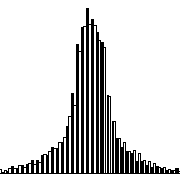Artificial neural networks in time domain electromagnetics
DOI:
https://doi.org/10.1109/ICATT.2017.7972598Keywords:
transient electromagnetic field, artificial neural network, convolutional neural network, layered mediumAbstract
The application of artificial neural networks (ANN) is considered to the problems of electromagnetics in time domain. Amplitudes of electromagnetic field in definite points of observation in different moments of time are proposed for using as initial values for an input layer of neural network. As examples the different structures of ANN were applied to solve the problem of determination of layered medium parameters by reflected transient field analysis. The incident field is plane wave with Gaussian time dependence. The stability of the determination of medium geometrical and electrical characteristics is studied for the case of presence of experimental errors, outer interferences, and instabilities of medium parameters.References
S. Haykin, Neural Networks, 2nd ed. New Jersey: Prentice-Hall, 1999. 823 p.
R. Callan, The Essence of Neural Networks. New York: Prentice Hall Europe, 1999. 232 p.
H. Harmuth, Nonsinusoidal Waves for Radar and Radiocommunications. New York: Academic Press, 1981. 346 p.
Yu. Dranitsa, “Principles of neural-like simulation of geophysical objects and processes,” Vestnik Moskovskogo GTU, vol. 5, No. 2, pp. 241-252, 2002.
D. Golovachev, A. Umnov, V. Yashkov, “Application of artificial neural networks for interpretation of data of nonlinear interference location,” Proc. of VI Sci. Conf. on Radio Physics, Nizhniy Novgorod, 2002, pp. 54-55.
O. O. Drobakhin, A. V. Doronin, “Estimation of thickness of subsurface air layer by neuron network technology application to reflected microwave signal,” Proc. of XII Int. Conf. on MMET, 29 Jun.-2 Jul. 2008, Odesa, Ukraine. IEEE, 2008, pp. 150-152. DOI: http://doi.org/10.1109/MMET.2008.4580920.
D. V. Shyrokorad, O. M. Dumin, O. O. Dumina, “Time domain analysis of reflected impulse fields by artificial neural network,” Proc. of IV Int. Conf. on UWBUSIS, 15-19 Sept. 2008, Sevastopol’, Ukraine. IEEE, 2008, pp. 124-126. DOI: http://doi.org/10.1109/UWBUS.2008.4669380.
O. M. Dumin, O. O. Dumina, D. V. Shyrokorad, “Time domain analysis of fields reflected from model of human body surface using artificial neural network,” Proc. EuCAP, 23-27 Mar. 2009, Berlin, Germany. IEEE, 2009, pp. 235-238. URL: http://ieeexplore.ieee.org/document/5067613/.
D. V. Shyrokorad, O. M. Dumin, O. O. Dumina, V. A. Katrich, “Analysis of fields reflected from model of human body surface using artificial neural network in time domain,” Proc. ICATT, Lviv, 2009, pp. 351-353. URL: http://icatt.org.ua/proc/article/view/ICATT.2009.4435199.
O. M. Dumin, D. V. Shyrokorad, O. O. Dumina, V. A. Katrich, V. I. Chebotarev, “Approximating properties of artificial neural network in time domain for the analysis of electromagnetic fields reflected from model of human body surface,” Proc. MSMW, 21-26 Jun. 2010, Kharkiv, Ukraine. IEEE, 2010. DOI: http://doi.org/10.1109/MSMW.2010.5546075.
D. H. Hubel and T. N. Wiesel, “Receptive fields, binocular interaction, and functional architecture in the cat’s visual cortex,” J. Physiology, vol. 160, no. 1, pp. 106-154, 1962.
Y. Le Cun and Y. Bengio, “Convolutional networks for images, speech, and time series,” in The Handbook of Brain Theory and Neural Networks. Cambridge, 1995, pp. 255-258.
D. Shyrokorad, O. Dumin, O. Dumina, V. Katrich, “Analysis of transient fields reflected from model of human body surface using convolutional neural network,” Proc. MMET, 6-8 Sept. 2010, Kyiv, Ukraine. IEEE, 2010. DOI: http://doi.org/10.1109/MMET.2010.5611389.
S. Alexin, O. Drobakhin, V. Tkachenko, “Reconstruction of permittivity profile for stratified dielectric material: Gel’fand-Levitan and Newton-Kantorovich methods,” Proc. of XII Int. Conf. on Math. Meth. in Electrom. Theory, MMET, 29 Jun.-2 Jul. 2008, Odesa, Ukraine. IEEE, 2008, pp. 141-143. DOI: http://doi.org/10.1109/MMET.2008.4580917.
A. Taflove, S. Hagness, Computational Electrodynamics: The Finite-Difference Time-Domain Method, 3rd ed. Boston-London: Artech House, 2005.

